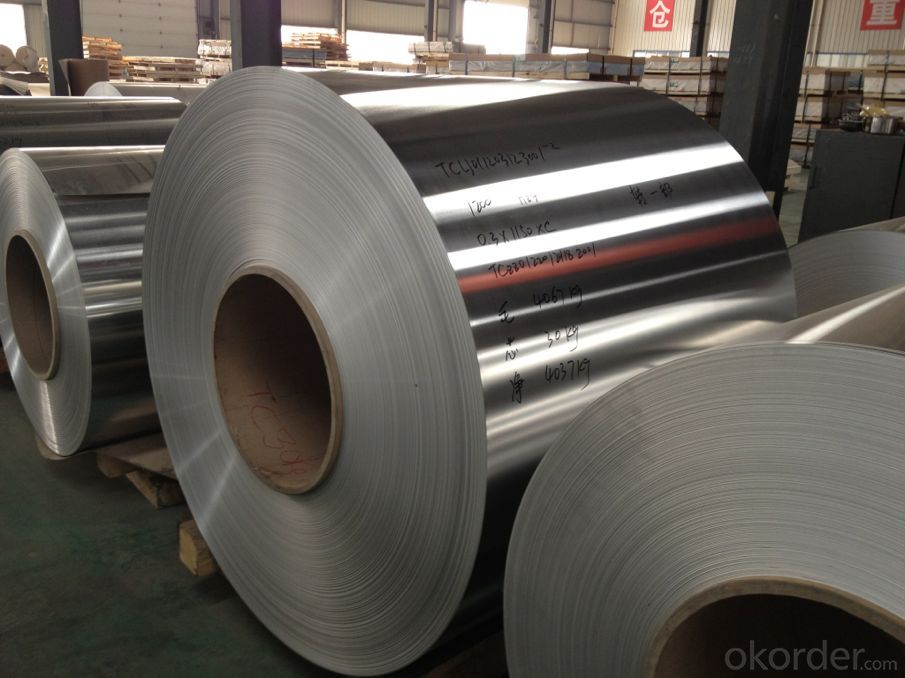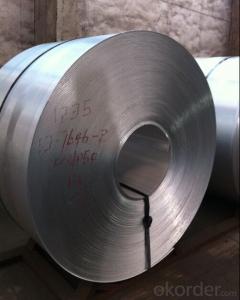Aluminium Best Sheet With Good Price In Warehouse
- Loading Port:
- Qingdao
- Payment Terms:
- TT OR LC
- Min Order Qty:
- 3 m.t
- Supply Capability:
- 4000 m.t/month
OKorder Service Pledge
OKorder Financial Service
You Might Also Like
Item specifice
1.Structure of Product Description
aluminum sheet and aluminum plate and aluminium slab and checkered sheet and mirror finished plate is all widely used in the field of construction field and field, etc.
Many different alloy number: and many different tempers, many different grades, such as: 1000 series, 2000 series, 3000 series, 6000series, etc. The detailed grade are as follows: ,1060,1100, 2024, 3003, 3005, 3105, etc.
The temper is include H14, H22, H44, H112,O,H114,etc.
2. Main features of the product
a.Competitive price
b. Shortest service.
3. Image.

4. Product detailed sizes:
1000mm*2000mm,1000*1000, 500*500mm,1220mm*2440mm,1250mm*2500mm,at random sizes,etc.
5. FAQ:
What is the quality standard?
---Usually our standard is GB3880-2006 or others.
What is the width range?
---It is from 1000mm to 6000mm, etc.
What is around 12 tons/each size.
How many tons did you export in one year
USA, England, UAE, Vietnam, Canada, etc.
What is your mainly products?
---Normally they are checkered sheet and mirror finished sheet and aluminum sheet,mirror finish aluminium sheet, aluminum casting coil, etc.
- Q:Are aluminum sheets suitable for food storage applications?
- Indeed, food storage applications can make good use of aluminum sheets. The food industry widely employs aluminum due to its lightweight nature, durability, and impressive thermal conductivity characteristics. It is common to fashion food storage containers, foil wrap, and trays from aluminum sheets. These sheets effectively shield against moisture, oxygen, and light, thereby preserving the freshness and quality of food. Moreover, aluminum is non-toxic and remains unaffected by acidic or alkaline foods, guaranteeing the integrity and safety of the stored food's taste.
- Q:What are the different types of aluminum sheets?
- There exists a variety of aluminum sheets, each possessing distinct characteristics and applications. Here are some commonly encountered types: 1. The plain aluminum sheet, with its smooth surface and uniform thickness, serves as the fundamental option. It holds widespread usage across various industries for general purposes. 2. The embossed aluminum sheet, achieved by rolling the metal through a patterned roller, presents a textured or patterned surface. It finds common application in fields like interior design or automotive trim, where decorative purposes are desired. 3. The perforated aluminum sheet, as its name implies, contains small holes or perforations throughout its surface. It frequently finds application in architectural scenarios, such as building facades or sunscreens, as well as in filtration systems. 4. The treadplate aluminum sheet, also known as checker plate or diamond plate, exhibits a raised pattern of lines or diamonds on its surface. This pattern enhances traction, making it suitable for industrial flooring or stair treads, where slip resistance is vital. 5. The anodized aluminum sheet undergoes an electrochemical process, forming a protective oxide layer on the surface. This process enhances durability, corrosion resistance, and allows for color customization through dye acceptance. Architectural applications, signage, and consumer products commonly employ anodized aluminum sheets. 6. The painted aluminum sheet, coated with a layer of paint, not only enhances appearance but also provides added corrosion protection. It is often utilized in applications where aesthetics are paramount, such as building facades, signage, or automotive parts. These examples represent a small selection of the aluminum sheet types available in the market. The selection of an appropriate type depends on specific project requirements, encompassing factors like durability, appearance, corrosion resistance, or slip resistance.
- Q:What is the weight of aluminum sheets?
- The weight of aluminum sheets may differ based on the thickness and dimensions of the sheet. In general, thin sheets can weigh approximately 2.7 grams per square centimeter (g/cm^2), while thicker sheets can weigh around 6.9 g/cm^2. Nevertheless, it is crucial to acknowledge that these figures are approximate and may slightly fluctuate depending on the specific alloy and manufacturing technique employed. Consequently, it is advisable to seek precise weight specifications from the manufacturer or supplier when dealing with a specific aluminum sheet.
- Q:What are the different methods of surface cleaning for aluminum sheets?
- There are several methods of surface cleaning for aluminum sheets, including mechanical cleaning such as sanding or grinding, chemical cleaning using solvents or acidic solutions, and electrolytic cleaning which involves using an electric current to remove contaminants. Additionally, ultrasonic cleaning and steam cleaning are also commonly used methods to clean aluminum surfaces.
- Q:Is aluminum sheet recyclable?
- Yes, aluminum sheet is highly recyclable.
- Q:Is plastic or alumium container more harmful to store food in if it does get to the food while heating.
- Neither is great, but aluminum is worse (especally when heated). Also you can't put aluminum in the microwave since it sparks (technically it should not be used for cooking), but plastic leaches stuff info food, especially if it's via ceranwrap on top (in a microwave). Storing things in platic tupperware in the fridge is fine since the temperatures are cold enough that no reactions can happen, but for cooking and eating, ceramic is preferable. Aluminum on the other hand should just be avoided (for baking pyrex glass/ceramic is better). Out of all the forms of aluminum, aluminum foil is the most likely to leech stuff. Hope that helps!
- Q:What are the different types of finishes used for decorative aluminum sheet?
- Decorative aluminum sheet can be enhanced and protected with various types of finishes. Here are some of the most common finishes available: 1. Mill finish: This is the standard finish when aluminum sheets come directly from the mill. It has a smooth, shiny appearance without any additional treatments or coatings. 2. Anodized finish: By undergoing an electrochemical process, a durable, corrosion-resistant layer is created on the aluminum surface. Anodized finishes can be clear or colored, giving the sheet a decorative, matte look. 3. Brushed finish: Also referred to as satin finish, this finish involves brushing the aluminum sheet with a fine abrasive material to produce fine lines or scratches. It results in a textured, non-reflective surface that conceals imperfections. 4. Polished finish: This finish includes polishing the aluminum sheet using a series of abrasive materials to achieve a smooth, reflective surface. It creates a shiny, mirror-like appearance, often utilized for decorative purposes. 5. Painted finish: Aluminum sheets can be coated with various types of paints to achieve different colors and finishes. These coatings can be applied through methods like powder coating, liquid painting, or coil coating, offering both decorative and protective advantages. 6. Embossed finish: This type of finish involves pressing a pattern or design onto the aluminum sheet, creating a three-dimensional surface. Embossed finishes can vary in depth and detail, adding texture and visual interest to the sheet. These examples demonstrate the variety of finishes available for decorative aluminum sheet. Each finish offers its own distinct appearance and benefits, allowing for a wide range of design options.
- Q:Are 101 aluminum sheets suitable for chemical processing environments?
- Chemical processing environments can utilize 101 aluminum sheets effectively. These sheets are made from a commercially pure aluminum alloy known as 101 aluminum, which boasts commendable resistance to corrosion and exceptional weldability. They find extensive application in settings demanding high corrosion resistance, such as chemical processing plants. Moreover, the protective measures of applying a coating or undergoing an anodizing process serve to augment their chemical resistance. In summary, 101 aluminum sheets are an ideal option for chemical processing environments, offering both corrosion resistance and durability when exposed to diverse chemicals.
- Q:Over 5 billion aluminum cans are recycled each year. If laid end to end, these cans would form a line reaching from?
- IDK, but this may give you some idea of 1 billion. 1 Billion seconds ago.. It was 1959 1 Billion minutes ago... Christ was alive.
- Q:How do you prevent oil or grease stains on aluminum sheets?
- To avoid oil or grease stains on aluminum sheets, there are several steps you can take: 1. Make it a habit to regularly clean the aluminum sheets. This will help eliminate any existing stains and prevent them from building up. Use a mild detergent or a mixture of water and vinegar to clean the sheets. Avoid using harsh cleaners or abrasive pads as they may harm the surface. 2. Apply a protective coating to create a barrier between the aluminum surface and oil or grease. Clear lacquer or anodizing are examples of coating options available. These coatings create a smooth and impermeable surface, making it difficult for oil or grease to penetrate and stain the aluminum sheets. 3. Use a barrier material if you frequently work with oil or grease near aluminum sheets. Consider using a silicone mat or placing parchment paper or aluminum foil between the aluminum sheet and the source of oil or grease to prevent direct contact. 4. Proper storage is crucial for preventing oil or grease stains on aluminum sheets. Store them in a clean and dry environment, away from potential sources of contamination. Keep the sheets covered or wrapped in a protective material to prevent dust, dirt, or oil from settling on the surface. 5. Handle aluminum sheets with clean hands. Ensure your hands are free of oil or grease before touching the sheets. Even small amounts of oil or grease on your hands can transfer onto the sheets and cause stains. If necessary, wear clean gloves or use clean tools when working with aluminum sheets to minimize the risk of stains. By implementing these preventive measures, you can significantly reduce the likelihood of oil or grease stains on your aluminum sheets, keeping them clean and in excellent condition.
1. Manufacturer Overview |
|
|---|---|
| Location | |
| Year Established | |
| Annual Output Value | |
| Main Markets | |
| Company Certifications | |
2. Manufacturer Certificates |
|
|---|---|
| a) Certification Name | |
| Range | |
| Reference | |
| Validity Period | |
3. Manufacturer Capability |
|
|---|---|
| a)Trade Capacity | |
| Nearest Port | |
| Export Percentage | |
| No.of Employees in Trade Department | |
| Language Spoken: | |
| b)Factory Information | |
| Factory Size: | |
| No. of Production Lines | |
| Contract Manufacturing | |
| Product Price Range | |
Send your message to us
Aluminium Best Sheet With Good Price In Warehouse
- Loading Port:
- Qingdao
- Payment Terms:
- TT OR LC
- Min Order Qty:
- 3 m.t
- Supply Capability:
- 4000 m.t/month
OKorder Service Pledge
OKorder Financial Service
Similar products
New products
Hot products
Related keywords





























